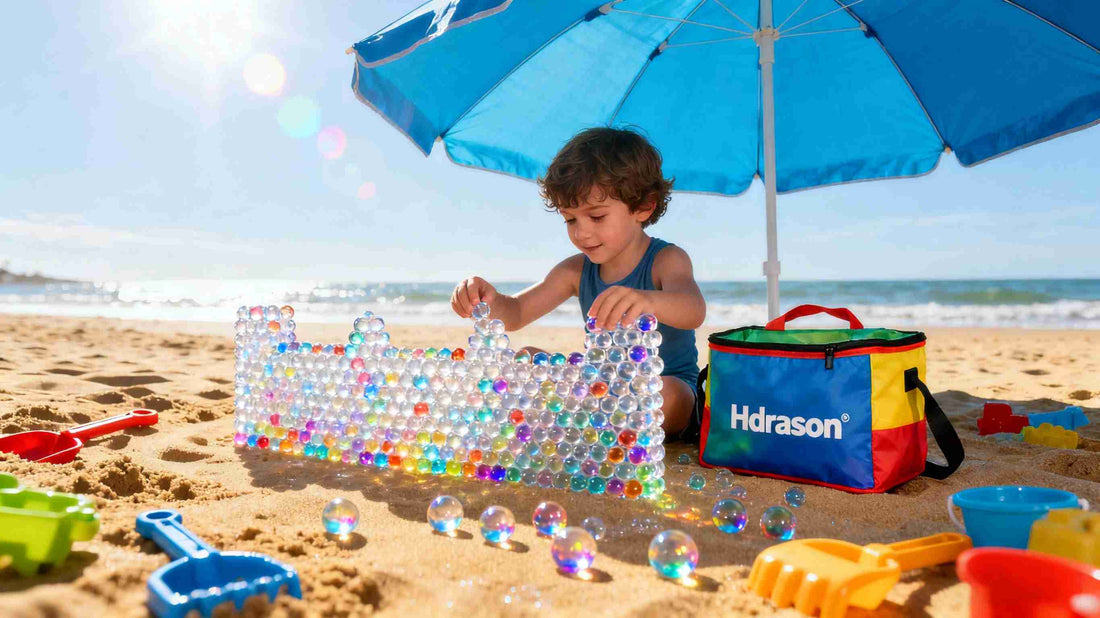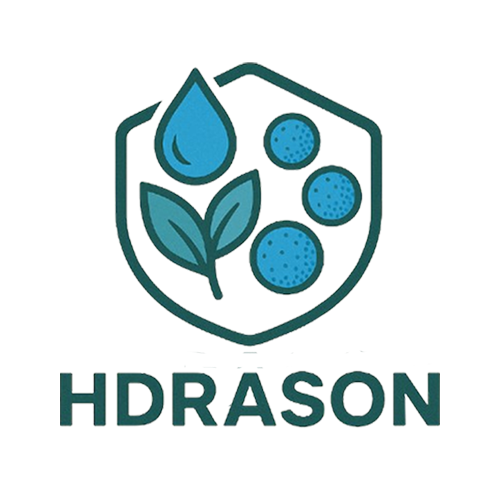
Gel Blaster bullets: How to use
Share
Gel blaster bullets—often called “gel beads” or “hydrogel ammo”—are the core of a safe, enjoyable gel blaster experience. Unlike traditional airsoft BBs, these water-absorbent projectiles rely on proper preparation and handling to perform well: use them incorrectly, and you’ll face jams, poor accuracy, or even damage to your blaster. Whether you’re a first-time user or looking to refine your routine, this guide breaks down how to use gel blaster bullets step-by-step, covering everything from pre-use prep to post-play care.
1. First: Know Your Gel Blaster Bullets (Key Basics for Beginners)
Before diving into use, it’s critical to understand what gel blaster bullets are and what makes them work. This foundational knowledge will prevent costly mistakes later.
What Are Gel Blaster Bullets Made Of?
Nearly all gel bullets are crafted from superabsorbent polymer (SAP), a non-toxic, food-grade material (common in baby diapers and gardening soil). In their dry state, they’re tiny—2–3mm in diameter (about the size of a pinhead)—and hard. When soaked in water, they absorb 300–500 times their weight in liquid, swelling to 7–10mm (the size of a small marble) and forming a flexible hydrogel (95% water, 5% polymer). This structure is why they’re safe: they deform on impact instead of shattering.
Critical Specs to Match Your Blaster
Not all gel bullets work with all blasters. The most important factor is size:
- 7–8mm bullets: The standard size for 90% of consumer gel blasters (pistols, rifles, SMGs). If you’re unsure, start here—they fit most beginner models.
- 9–10mm bullets: For high-powered blasters (sniper rifles, upgraded electric models). Using these in a standard blaster will cause jams or misfires.
Always check your blaster’s manual for the recommended bullet size. If you don’t have the manual, measure your blaster’s barrel inner diameter (it should be 1–2mm larger than the swollen bullet—e.g., an 8mm barrel needs 7mm bullets).

Avoid Low-Quality Bullets
Cheap, unbranded gel bullets often have uneven sizes, poor absorption, or toxic additives. Look for bullets labeled “non-toxic,” “food-grade SAP,” or from trusted brands (e.g., Hdrason, Valken, GelSoft). Avoid bullets with a chemical smell—this is a red flag for harmful materials.

2. Step 1: Prepare Gel Bullets (Soaking, Screening, Drying)
Proper preparation is the #1 factor in smooth gel blaster performance. Rushing this step leads to jams and wasted ammo. Here’s how to do it right:
What You’ll Need
- Dry gel bullets (100–200 per hour of play, depending on your blaster’s magazine capacity)
- A large bowl/bucket (2x the volume of dry bullets—they expand drastically!)
- Room-temperature tap water (distilled works, but tap is fine for most users)
- A colander/sieve (for draining)
- A clean towel (for gentle drying)
- A small sieve or mesh strainer (for screening sizes)
Step 1: Measure Dry Bullets
Don’t guess—use a measuring cup. For beginners, ¼ cup of dry bullets (about 500 pellets) swells to fill a 2-cup bowl, enough for 1–2 hours of play. Overcrowding the bowl means some bullets won’t expand evenly, so err on the side of smaller batches.
Step 2: Soak the Bullets (The Most Critical Step)
- Water temperature: Use room-temperature water (18–25°C). Hot water (>40°C) damages the SAP, making bullets brittle; cold water (<10°C) doubles soaking time (6+ hours instead of 3–4).
- Water volume: Cover dry bullets with 2–3 inches of water. They need space to expand—if the water level drops as they soak, add more to keep them submerged.
- Soaking time: Set a timer for 3–4 hours. Resist stirring early—this deforms bullets. After 3 hours, test a few:
- A properly soaked bullet is firm but flexible (like a ripe grape), has no white “dry core” in the center, and matches your blaster’s required size.
- If it’s hard or has a core, Soak for another 30–60 minutes.
- If it’s mushy, tears easily, or sticks to your fingers: It’s over-soaked—discard it (it will jam your blaster).
Step 3: Drain and Screen
- Drain: Pour soaked bullets into a colander to remove excess water. Don’t leave them in standing water—this causes over-softening.
- Screen: Use a small mesh sieve (or your fingers) to sort out bad bullets:
- Remove undersized bullets (<6mm) or oversized bullets (>11mm)—they’ll get stuck in the barrel.
- Toss broken, misshapen, or overly soft bullets—they won’t fly straight.
Step 4: Dry Gently (Optional but Recommended)
Pat soaked bullets with a towel to remove surface moisture. This prevents them from sticking together in the magazine. Don’t squeeze—you’ll break the hydrogel structure.

3. Step 2: Load Gel Bullets (Tips for Different Blaster Types)
Loading methods vary by blaster design, but the goal is always to avoid overpacking and ensure bullets feed smoothly. Here’s how to load the three most common types:
1. Magazine-Fed Blasters (Most Common: Rifles, Pistols)
- Prepare the magazine: Open the magazine’s fill port (usually a small lid on top or side).
- Load slowly: Drop bullets into the port one by one, or use a small funnel to speed up. Don’t force bullets—if they don’t fit easily, they’re too big.
- Don’t overfill: Fill the magazine to 80% capacity. Soaked bullets may expand slightly, and overfilling will prevent the magazine from inserting into the blaster or cause jams.
- Test the feed: After loading, shake the magazine gently. If bullets rattle, they’re loose enough to feed; if they’re stuck, empty and reload with fewer bullets.
2. Drum-Fed Blasters (High-Capacity Models)
- Open the drum: Twist or unlock the drum’s lid (follow your blaster’s manual—some drums have a removable inner tray).
- Distribute evenly: Pour bullets into the drum, tapping it gently to spread them out. Uneven loading causes “dead zones” where bullets won’t feed.
- Close securely: Ensure the lid clicks into place—loose lids let bullets fall out mid-play.
3. Manual-Fed Blasters (Single-Shot Rifles, Shotguns)
- Load one at a time: Open the barrel’s loading port (often at the rear) and insert a single bullet.
- Check alignment: Make sure the bullet sits straight in the barrel—angled bullets cause misfires.
- Close the port firmly: Don’t leave it loose—air pressure will escape, reducing range.

4. Step 3: Use Gel Bullets in Play (Best Practices for Safety & Performance)
Once loaded, how you use the blaster affects both bullet performance and safety. Follow these rules:
Safety First (Non-Negotiable)
- Wear eye protection: Always use ANSI Z87.1-approved safety goggles—even soft gel bullets can hurt eyes. Regular glasses or sunglasses don’t count.
- Avoid sensitive targets: Never shoot at faces, necks, or pets. Stick to torsos and limbs—this keeps play fun for everyone.
- Choose a safe venue: Play in private yards, dedicated gel blaster arenas, or empty indoor spaces (e.g., garages). Avoid public parks, streets, or areas with bystanders.
Performance Tips
- Don’t dry-fire: Firing without bullets damages your blaster’s piston (it relies on the bullet to cushion air pressure). Always check that the magazine is loaded before pulling the trigger.
- Optimal shooting distance: Gel bullets have a max range of 20–35 meters, but accuracy peaks at 10–20 meters. Beyond that, wind and gravity will drag bullets off target.
- Maintain your blaster mid-play: If you notice jams, stop immediately. Turn off the blaster (for electric models), remove the magazine, and use a cleaning rod to gently push stuck bullets out of the barrel. Don’t force the rod—you’ll damage the barrel.
5. Step 4: Post-Play Care (Storage & Disposal)
Proper after-use care extends the life of your gel bullets and keeps your blaster in good shape.
Storing Unused Soaked Bullets (Short-Term)
If you have leftover soaked bullets:
- Pat them dry with a towel to remove surface moisture.
- Place them in an airtight container (plastic Tupperware or mason jar) and add 1–2 tablespoons of water (just enough to keep them moist, not submerged).
- Store in the fridge (extends life to 7–10 days) or at room temperature (3–5 days). Discard any bullets that grow mold—don’t reuse them.
Reusing Dried-Out Bullets
If soaked bullets dry out (they’ll shrink back to 2–3mm), you can re-soak them! Note:
- Re-soaked bullets take 30–60 minutes longer to expand than new ones.
- Their performance may drop slightly (less accuracy, softer texture)—use them for casual play, not competitive games.
Disposal (Eco-Friendly Rules)
- Don’t litter: Soaked bullets are biodegradable (they break down in 4–6 weeks outdoors), but don’t leave them in public spaces—they can confuse wildlife. Pick up stray bullets after play.
- Don’t pour down drains: Swollen bullets clog pipes. Throw unused bullets in the trash (they’ll dry out and decompose safely).
- Dry bullets: Unused dry bullets can be stored in a sealed bag for 6–12 months—no need to discard them.
6. Troubleshooting Common Gel Bullet Issues
Even with proper use, problems happen. Here’s how to fix the most common ones:
|
Issue
|
Cause
|
Solution
|
|
Blaster jams frequently
|
Over-soaked bullets, undersized/ oversized bullets, overfilled magazine
|
Discard over-soaked bullets; screen for correct size; fill magazine to 80% capacity.
|
|
Bullets have a short range (<10m)
|
Under-soaked bullets (too dense), dirty barrel
|
Re-soak bullets until flexible; clean the barrel with a soft brush to remove debris.
|
|
Bullets break mid-air
|
Over-soaked bullets, low-quality SAP
|
Use bullets soaked for 3–4 hours; switch to a trusted brand.
|
|
Magazine won’t feed bullets
|
Uneven loading, stuck bullet in feed tube
|
Empty magazine, reload evenly; use a cleaning rod to clear the feed tube.
|
Conclusion
Using gel blaster bullets correctly isn’t just about avoiding jams—it’s about keeping play safe, fun, and sustainable. By following the steps above—matching bullets to your blaster, soaking properly, loading carefully, and caring for ammo post-play—you’ll get the most out of every game. Remember: Gel blasters are about teamwork and enjoyment, so prioritize safety and respect for others (and the environment) above all else. Now grab your blaster, load up, and have fun!
